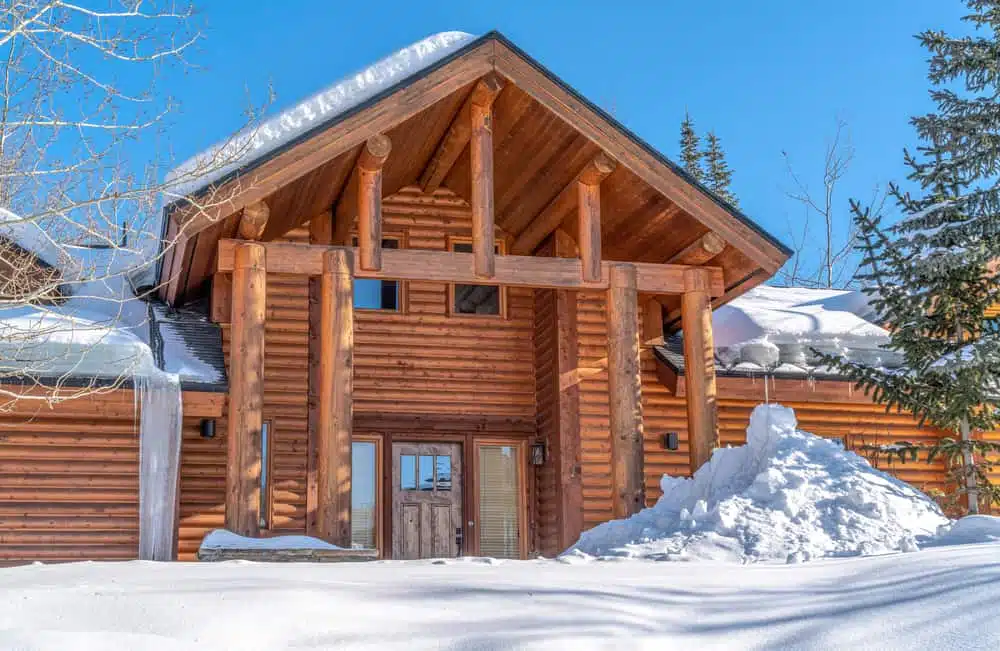Before the snow starts flying and the temperatures drop below zero, you should get the interior of your log home properly winterized. Not only will this help keep you toasty warm during the winter months, but it will prevent any issues caused by the harsh weather.
After you have read through this article, you should have the knowledge to keep your log home sealed and otherwise prepared for the cold.
Plumbing
One very common issue many homeowners have in the winter is freezing pipes. This can be a huge pain, and it might lead to your pipes bursting, which can be costly to repair, and it is certainly not something anyone wants to deal with in the miserably cold winter.
That is why it is best to simply avoid this issue altogether. You can winterize the plumbing of your log home by taking a few simple measures.
You should first make sure to insulate any pipes of your home that are exposed, such as the ones in your attic or basement. You can use a spiral pipe wrap or insulation-semi split to wrap around the exposed pipes.
It is incredibly quick and easy to do this, and it can save you a great deal of trouble later on. Do not skip this step by thinking that your home’s heating alone will prevent freezing from happening.
It is also a good idea to turn off your air conditioner’s water shut-off valve if it has one, and you should drain the pipes of your AC. You can drain your garden hose as well to keep it from freezing and getting damaged.
If you are going to be away from your home for multiple days, leave the heat set to at least 55 degrees Fahrenheit to keep your pipes from becoming frozen.
If your pipes do end up freezing, the first action you should take is to shut off the water main. Thus, it is ideal for you to know exactly where it is located so you can quickly get to it in the event of an emergency.
Seal up Your Home
You can keep your log home much warmer by sealing any small cracks by windows and exterior doors that cold air can seep through. Use storm windows to better seal your home, put weather stripping around your exterior doors, and caulk around the windows.
You can also cover all of your windows in plastic to really keep the air from getting in.
Cold air can also make its way through openings between the logs of your home. Thoroughly check the outside walls of the house to look for any crevices or gaps, particularly around areas that have pipes or other features coming out through the logs, and seal up any you find.
Fireplace
If you plan to use the fireplace in your log home this winter, you will need to make sure it is properly cleared of any soot and creosote. Having a buildup of material in your chimney can result in tragic consequences, such as a raging fire inside the chimney.
You should also think about putting a screen or cover on your home’s chimney to prevent small animals from climbing inside.

